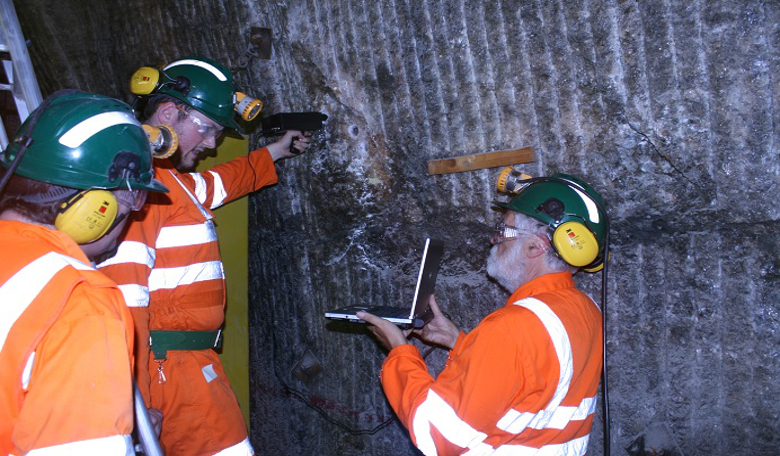In preparation for searching for life on Mars, a PhD student is testing a powerful spectrometer that will be used on the ExoMars mission by exploring similar environments on Earth - and where best to look but deep underground in Yorkshire, England.
The mines in Boulby, Yorkshire which stretch a kilometre down and out under the North Sea, are not only excavated for their potash contents but they also host an underground laboratory. Boulby is one of just a handful of facilities world-wide suitable for hosting ultra-low background and deep underground science projects. Past projects at the mine have ranged from the search for Dark Matter in the Universe, to studies of cosmic rays and climate.
Now astrobiology and life in extreme environments can be added to the impressive list, as Peter Edwards from the University of Leicester is investigating how to optimise the performance of an instrument known as a Raman Laser Spectrometer, that will be used on the scientific rover heading for Mars in 2020.
The spectrometer is a powerful, laser based, analytical tool that provides information on the molecular composition of materials by looking at the minute changes in the light that is scattered back from the laser. The differences in wavelength and colour that is seen in the scattered light – known as the Raman effect – carries information about the molecules present in the sample such as the mineral content of the sample, or the presence of more complex biomarkers.
For example, in previous studies, Raman spectroscopy has been used to detect a pigment known as scytonemin, which is produced by a microorganism known as cyanobacteria to shield itself from ultraviolet radiation. If scytonemin is found on Mars it could be an indication that the microorganism was present at some point in the Red Planet’s history.
Peter is investigating the optimal performance of the tool by studying various types of samples recovered from extreme environments on Earth in conjunction with looking at the information obtained from previous Mars rovers (such as Curiosity).
“Parts of Mars are quite similar to the salty environment deep underground at Boulby. In these areas we see polygons marked out in the ground similar in some ways to the Giants Causeway on Mars. Underground we can see these same polygons on the ceiling and walls of tunnels,” said Edwards. “Salty environments are typically hostile to life but certain types of micro-organisms can adapt to these hostile conditions, we call these halophiles. By investigating the difference between the dark outer edges of these polygons compared with the lighter inside we can work out where to direct rovers on Mars when searching for life in these similar conditions.”
“Further work with the data from the mine and samples recovered from the mine will allow us to investigate them in much greater detail helping us to plan the targets for future missions to Mars,” continued Edwards. If the instrument is a success, then it is not only the ExoMars programme that will benefit, as it is also likely that the spectrometer will find itself on other missions that are currently considered for destinations such as Phobos and Europa.











